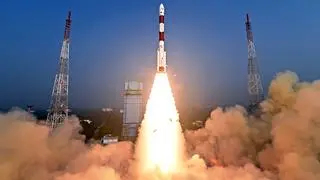It was not just vaccines and medicines that were in short supply during the peak of the Covid-19 pandemic, but several countries had faced a critical shortage in medical liquid oxygen as well. And though some of the world’s leading medical oxygen producers had taken steps to address this, the underlying problem remains unaddressed in low and middle income countries (LMIC), says a report by Netherlands-based Access to Medicine Foundation.
In fact, April 2021 had seen some hospitals in India also scramble for oxygen supplies.
“In 2021, it was estimated that 73 million people with low blood oxygen (hypoxemia) attended healthcare facilities in LMICs, and of those, only 22 million were suffering from Covid-19. Many more people, including 32 million children, attending these facilities needed oxygen due to other conditions and routine procedures…,” the report said. Access efforts by six of the world’s largest global gas companies that also produce medical liquid oxygen, were assessed by this report (Air Liquide, Air Products, Linde, Messer, Nippon Sanso Holdings Corporation and SOL Group).
Despite medical oxygen being on the World Health Organization’s Model List of Essential Medicines (meaning it is a product that should be available in every country’s health system) about half the healthcare facilities in LMICS do not have reliable access to medical oxygen, the report pointed out.
“With a small number of companies responsible for the world’s supply of medical liquid oxygen, the role they play in the global health ecosystem needs to be prioritised. Medical gases are a small part of these companies’ business, yet society needs them to ensure this vital lifeline is available both during emergencies and to meet the daily medical oxygen needs of all health systems,” said Jayasree K Iyer, Chief Executive of the Access to Medicine Foundation.
Agile initiatives
The report noted, that some initiatives from the companies were agile, but they needed to be more long-term in their access planning to ensure a sustainable supply beyond this global health crisis.
Outlining some of the initiatives undertaken to improve access, it said, some gas companies airlifted whole medical liquid oxygen tankers and trailers into LMICs via specially chartered aircraft, and others upped production capacity from industrial liquid oxygen to much-needed medical liquid oxygen. But this was limited in its geographic reach, the report said. Across the six major gas companies, such initiatives to increase the supply of medical liquid oxygen during the pandemic were reported in only 39 of the 108 LMICs in scope – approximately one third, the report noted.
Further, it said, Air Liquide was currently the only company with a clear access-to-medical oxygen strategy targeting LMICs. Although, Air Liquide, Air Products, Messer and Nippon Sanso Holdings Corporation have reported the installation or acquisition of new liquid oxygen-producing Air Separation Units (ASUs), including in South Africa, China, Egypt, India, Vietnam and Thailand, said the report. The non-profit foundation is funded by the Dutch and UK governments, the Bill & Melinda Foundation, the Leona M. and Harry B. Helmsley Charitable Trust, and AXA Investment Managers.







Comments
Comments have to be in English, and in full sentences. They cannot be abusive or personal. Please abide by our community guidelines for posting your comments.
We have migrated to a new commenting platform. If you are already a registered user of TheHindu Businessline and logged in, you may continue to engage with our articles. If you do not have an account please register and login to post comments. Users can access their older comments by logging into their accounts on Vuukle.